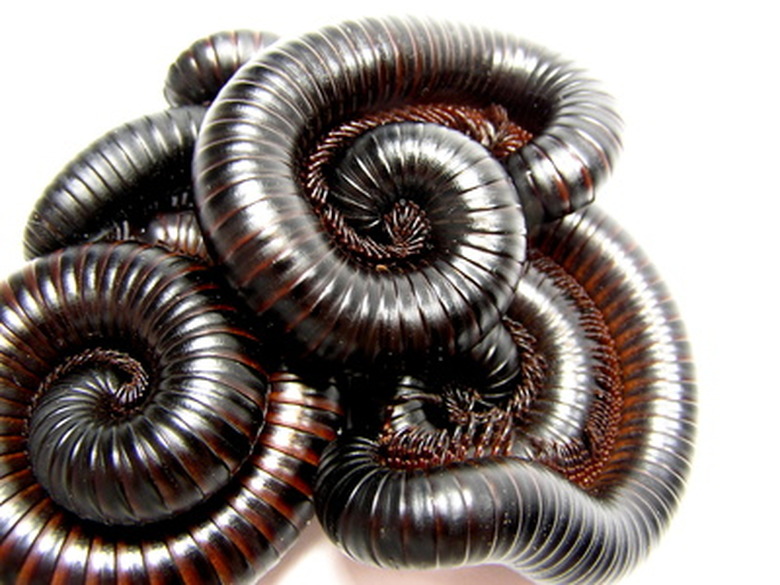How To Control Millipedes In Potted Plants
Things Needed
-
Lawnmower
-
Broom
-
Vacuum cleaner
Tip
Treat affected areas with chemicals labeled for millipede control, if you must. Apply a 5- to 20-foot band of the material around the entire perimeter of your home. Follow the directions carefully.
Warning
If millipedes inside your home are numerous, it may be an indication of the presence of a more serious condition. They're migrating indoors because the environment is favorable for them, so there's probably a structural moisture issue.
Millipedes do have one disgusting little defense mechanism. If you disturb one, it may roll up into a ball and perform an act similar to a human passing gas.
Millipedes aren't insects, but they certainly are pests. They don't bite or sting, destroy property or carry communicable diseases. While they aren't dangerous, we'd rather they not take up residence in our potted plants. Chemicals are not only undesirable to many of us, they're ineffective against millipedes as a sole means of control. Apply some elbow grease to the equation instead to make your potted plants and their areas unfit for millipede homesteading. That's usually all that's really necessary to manage this nuisance and send the critters packing in a hurry.
Step 1
Remove mulch from your indoor potted plants. This material provides excellent millipede accommodations.
Step 2
Water potted plants appropriately for their species and your environmental conditions. Allow the soil to dry out as much as possible in between waterings without resulting in injury to the plant. Water early in the day to give the soil plenty of time to dry out before millipedes become most active: after dark. This will make the specimen undesirable to moisture-loving millipedes.
Step 3
Sweep and vacuum often to intercept millipedes that may stray from the plants to wander around the house. You don't want to accidentally step on one and crush it into the carpet or ruin a fine Oriental rug.
Step 4
Eliminate millipede housing and food sources around your porch and patio potted plants. These arthropods prefer the great outdoors and favor moist, dark hidey-holes under piles of debris or other things in the yard. Move heaps of mulch or compost as far away from your plants as possible. Get stacked firewood up off of the ground.
Step 5
Remove and destroy plant material immediately after weeding or pruning — don't just leave it lying around to decay and feed the millipedes. Keep these materials away from the foundation of your home.
Step 6
Mow your lawn often to promote quicker drying of the area, rendering it inhospitable to invading millipedes.
Step 7
De-thatch your lawn whenever possible. Thatch is a layer of decaying plant material that provides moist, highly desirable millipede housing projects. Keep stands of weeds cut or pulled.
Step 8
Water your gardens, lawn and outdoor potted plants as early in the day as possible. This will allow the environment plenty of time to dry out well, discouraging millipede habitation.
